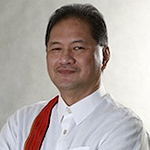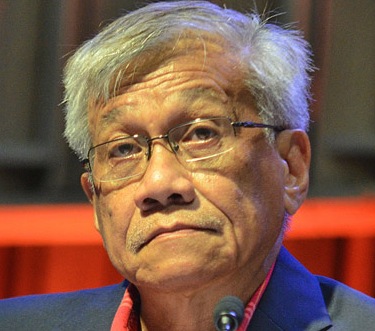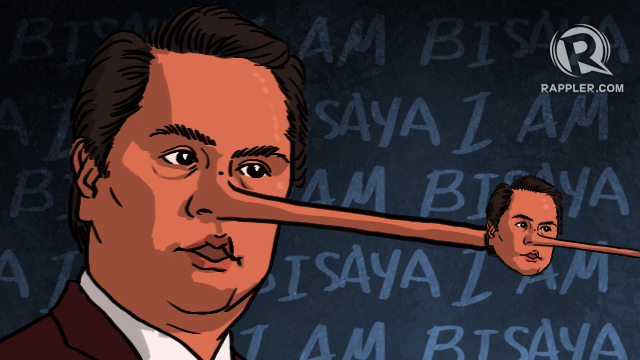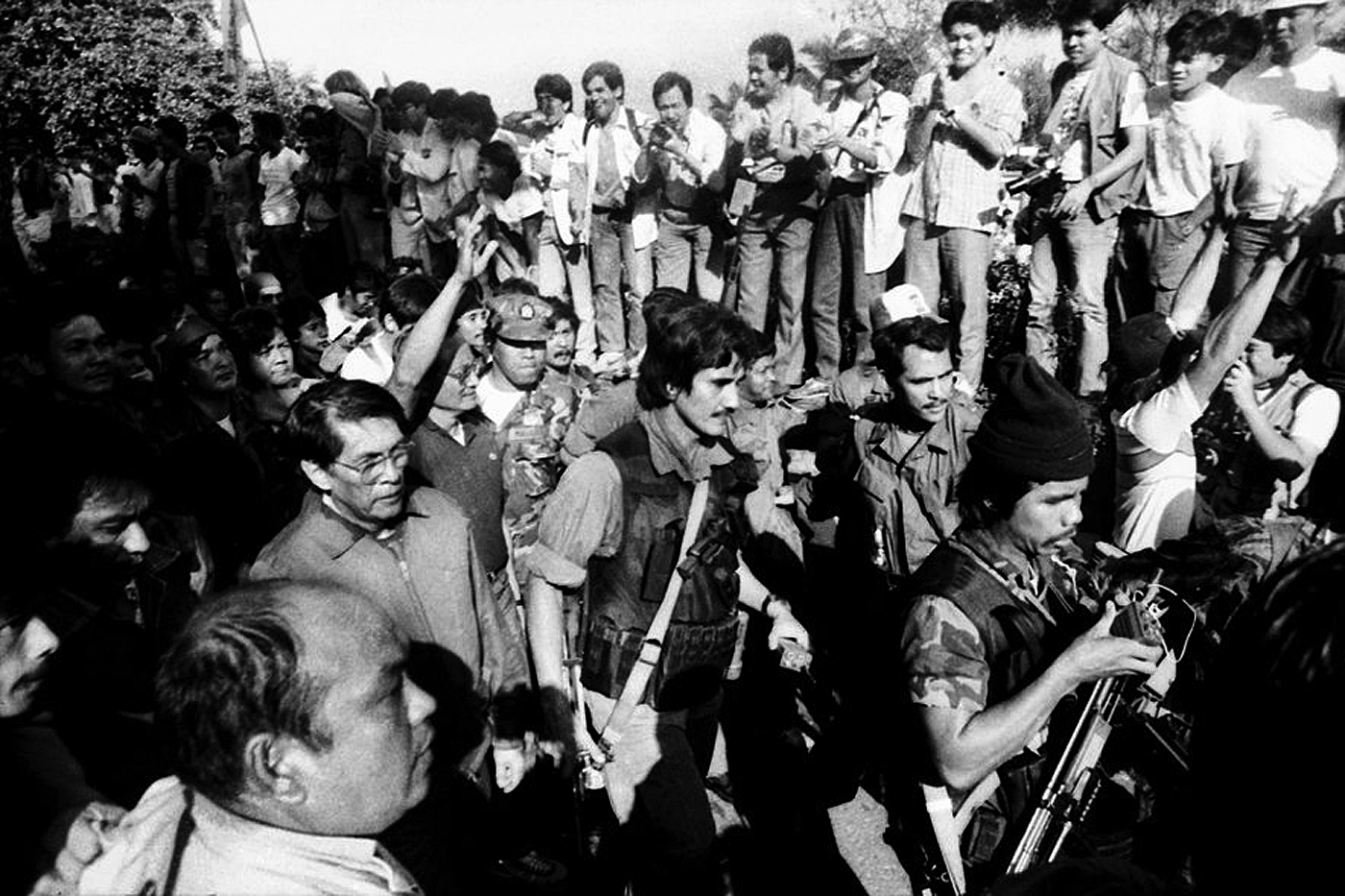Eksaktong 31 taon ngayong araw, katanghaliang-tapat ng Sabado, nagsimulang turuan ng sambayanang Pilipino ang buong mundo kung paano ipaglaban ang demokrasiya’t kalayaan, sa isang matiwasay at walang pagbubo ng dugong pamamaraan – ito ang binansagang “1986 People Power Revolution” – ang apat na araw na pakikipagmatigasan ng mga Pilipino upang mapatalsik ang diktatoryang rehimeng Marcos, na halos dalawang dekada ring nagtampisaw sa karangyaan at kapangyarihan, habang naka-pasang krus naman ang mas nakararaming mga mamamayan.
Police reporter ako noon sa muling pagbubukas ng pahayagang Manila Times, na ang haba ng panahong nakasara ito, ay halos kasing edad na ng Martial Law na umiiral sa buong bansa – isa kasi ang pahayagang ito sa mga ipinasarang media establishment matapos na mag deklara ng Martial Law ang dating Pangulong Ferdinand E. Marcos. Hindi na ito muling binuksan ng pamilya Roces na siyang may-ari nito, hanggang sa maipit sa isang interview si Pangulong Marcos at mapilitang ipagsigawan sa buong mundo, na nakahanda na siyang tumawag muli ng eleksyon para patunayang hindi siya isang diktador. Dito na muling binuhay ang diyaryong Manila Times at isa ako sa apat na unang mga naging police reporter nito. Maging ang lingguhang magasing Inquirer ay biglang naging broadsheet sa pasiyang ito ni Marcos.
Ang totoo, kahit na police reporter na ako noon at labas-masok sa mga presinto at kampo ng militar at pulis sa Metro Manila at mga karatig na lalawigan, ni katiting na hinagap na magaganap ang People Power sa EDSA ay wala akong naramdaman – ‘di naman marahil sa manhid ang aking pakiramdam kundi talaga lang sobrang confidential ang planong pagpapabagsak sa rehimeng Marcos ng grupo ng mga militar na pinamumunuan ng noon ay isang military colonel na si Gregorio “Gringo” Honasan, na napakalapit naman sa noo’y Secretary ng National Defense (SND) na si Juan Ponce Enrile. (READ: Key players in the 1986 People Power Revolution)
Nabuking ang planong paglusob sa palasyo, at ang dalawang opisyal ng grupo ng militar na kung tawagin ay Reform the Armed Forces Movement (RAM), na mga kasama sa gagawing pag-atake sa Malacañang, sina Major Saulito Aromin at Major Edgardo Doromal, ay naaresto at agad “ipinakanta” ang lahat nilang nalalaman sa planong paglusob sa loob ng Palasyo – kaya’t bago pa lang makapananghali ng Pebrero 22, 1986, ay kumalat na sa mga taga-media ang gagawing pag-aresto kay Secretary Enrile, dahil siya ang kilalang “godfather” ng grupong RAM. Kapansin-pansin ang mga armadong sundalo sa paligid ng gusali ng Department of National Defense (DND) na unti-unti na ring napapalibutan ng mga taga-media na naghihintay sa napabalitang presscon na magaganap sa mga oras na iyon.
![]()
Gadget
'Di pa uso ang mga gadget noon tulad ng mga smart cellular phone at laptop ngayon. Walang pang text, email, chat at mga digital na litrato, kaya’t kanya-kanyang paraan sa pabilisan nang pagkuha at pagbato ng impormasyon kaming mga taga-media sa aming mga opisina at sa mga sideline na kung tawagin ay “abugadi” at “tabo” na mga foreign news agency. Sa bagay na ito, ay hindi ako magpapahuli, lalo pa’t gadget din lamang ang pag-uusapan. Siyempre mayroon ako – isang Radio Frequency Scanner at Tone Beeper na sobrang gamit na gamit ko sa aking mga coverage.
Nakatulong sa akin para agad kong malaman ko kung ano ang mga nagaganap sa kapaligiran ay ang aking AOR scanner na kasing laki lang ng mga cellular phone ngayon pero may 100 memory channel. Dito ko na momonitor ang mga “alert move” ng mga operatiba ng pulis at militar, RAM man o “loyalist” (Ang tawag sa mga rebelde noon ay RAM, “loyalist” naman ang sa mga sundalo ng pamahalaan) kaya’t kadalasan ay nakatatakbo agad ako sa lugar kung saan may inaasahang mangyayari, bago pa man ito malaman ng ibang taga-media.
Sa pamamagitan naman ng aking Tone Beeper ay madali akong ma-locate ng aking mga editor sa opisina kung ako ay kailangang utusan at patakbuhin sa isang lugar na may nalaman silang nangyayari. Wala kang mensaheng maririnig o mababasa sa Tone Beeper, maliban sa kapag nag-beep na ito ay senyales na dapat kang maghanap ng landline na telepono para tumawag sa iyong opisina(long beep) o sa bahay (short beep na paulit-ulit), para malaman mo kung ano ang bilin. Kalimitan itong gamit ng mga doctor para agad sila makontak sa ospital lalo pa’t may pasyente silang nasa emergency ang kalagayan. Ang beeper ko ay pamana ng isang kaibigang doktor na nangibang bansa na upang doon magtrabaho dahil nga sa hindi na raw magandang kalagayan pang ekonomiya sa bansa.
Napakalaking tulong ng dalawang gadget na ito sa aking coverage sa loob ng apat na araw na ang sentro ng mga nangyayari ay sa loob at labas ng Camp Crame at Camp Aguinaldo, kung saan ako ay paikut-ikot lamang, dala ang isang telang may nakabaligtad na bandilang Pilipino, ang gamit kong “counter-sign” sa paglabas-masok sa mga kampo. Ipinamigay ito sa Camp Crame sa mga nag-boluntaryong tutulong sa mga rebeldeng sundalo o RAM sa loob ng opisina ng PC –INP Public Information Office (PIO) na pinamumunuan ni Colonel Luis San Andres at nang kanyang senior staff na si Captain Cris Maralit. Kung marunong kang kumalabit ng gatilyo noon ay agad-agad ka rin pahahawakin ng isang Baby Armalite para makasama ka na sa mga magtatanggol sa kampo na noon ay napabalitang lulusubin na ng mga Marines.
Breakaway
Habang papadilim na noong Pebrero 22, 1986, unti-unting napupuno ng mga taga-media, local at foreign, ang loob at paligid ng magkabilang kampo sa pagitan ng EDSA at pagpatak ng ganap na 6:30 ng gabi – magkakasabay na isinara na ang mga gates sa Camp Crame at Camp Aguinaldo at isang press conference ang isinasagawa sa loob ng gusali ng DND at dito na pormal na inanunsiyo nina Secretary Enrile at General Fidel V. Ramos ang kanilang pag-BREAKAWAY sa administrasyon ni Pangulong Marcos.
Hindi na ako pumasok sa loob ng DND, hindi ako nakatalagang i-cover ito. May mga kasamahan na akong taga Manila Times ang nasa loob na ng DND kaya’t ang sitwasyon na lamang sa buong paligid ang aking minomonitor. May bitbit naman akong transistor radio at nakatutok sa broadcast ng Radio Veritas na tuluy-tuloy na nagre-report sa lahat nang ginagawa at sinasabi ng mga nag-breakaway na sundalo at mga opisyal, na nagkulong na sa loob ng Camp Aguinaldo.
Habang palalim na ang gabi, patuloy ang pagbabalita ng Radio Veritas sa mga nangyayari sa loob ng kampo at bandang 9 pm ay nanawagan si Archbishop Jaime Cardinal Sin sa mga mamamayan na nakikinig sa kanilang radio na magpunta sa EDSA at suportahan sina Enrile at Ramos sa ginawa nilang pagtalikod sa pamahalaang Marcos. Nanawagan pa si Cardinal Sin na magdala ng mga pagkain para sa mga sundalo sa loob at labas ng dalawang kampo sa magkabilang panig ng EDSA.
Naging mainit at napakasigla naman ang naging pagtugon ng mga mamamayan sa panawagan ni Cardinal Sin sa radyo. Unti-unting nadaratingan sa EDSA ang pami-pamilyang mga tao na unti-unting umuukopa sa kahabaan ng EDSA, mula sa lugar ng Cubao sa Quezon City hanggang sa may tulay ng Guadalupe Nuevo sa Makati, animo papunta sa piknik sa dami ng kani-kaniyang bitbit na mga pagkain na iniaalok at ibinabahagi nung mga maraming dala, sa grupo naman ng mga walang bitbit. Masaya ang mga tao. Nagkakantahan ang pami-pamilya ng ilang makabayang awitin, gaya ng “Ang Bayan Ko” at “Pilipinas Kong Mahal.”
![FATHER FIGURE. Enrile (left, wearing glasses) was like a second father to a younger Honasan (middle). Photo by Romeo Mariano.]()
Literal na masasabi kong bumaha noon ng inumin, mga soft drinks, mga juice na naka-tetra pack at nasa lata, at mga de latang sardinas na pampalaman sa suput-supot na mga tinapay at pandesal. Narinig ko pa nga ang komento ng ilang sundalo sa may gate ng Crame at Aguinaldo, na sa dami raw ng dumating na mga pagkain, kahit tumagal pa ng isang buwan ang giyerang kanilang papasukin ay di sila magugutom. Nakisali na rin kasi sa pagde-deliver ng mga pagkain ang ilang malalaking restaurant, food chain at mga hamburger store – sa pagbabahagi ng kanilang mga food products sa mga sundalo sa loob ng mga kampo at mga undercover agents na naglipana sa paligid ng Kampo Crame at Aguinaldo at kahabaan ng EDSA na mabilis nang napupuno ng mga nagdadatingang mga tao.
Marines
Tahimik at pakiramdaman halos ang mga tao sa buong magdamag, suwerte lang kung makanakaw ka ng konting tulog – maya-maya, madaling-araw na ng Linggo, Pebrero 23, 1986 – sumabog ang balitang nilusob at pinabagsak daw ng mga “loyalist” na Marines ang transmitter ng Radio Veritas sa Malolos, Bulacan kaya bigla itong nawala sa ere at natigil sa pagre-report. Dito na nabalot ng tensyon ang mga tao sa magkabilang kampo at mga nagbi-vigil sa gitna ng EDSA, sa harapan ng dalawang kampo...baka raw kasi ang susunod na pag-atake ng mga Marines ay sa EDSA na.
Ngunit ‘di naman nagtagal ay biglang naghiyawan ang mga tao – muling bumalik sa ere ang Radio Veritas gamit ang kanilang standby generator at transmitter. Ang inirereport nito ay ang intel-information hinggil sa posibleng pag-atake raw ng mga Marines sa Camp Crame at Aguinaldo sa araw na iyon. Dito na ipinasya nina General Ramos at Secretary Enrile na magsama na lamang sa Camp Crame matapos nilang makumpirma ang intelligence report, na naghahanda na raw ang mga Marines at mga taga-Air Force(PAF) sa gagawing paglusob sa kanila. Dito naganap yung madalas ninyong naririnig na “Salubungan sa EDSA” na kasamang palagi sa pag-alaala sa pagdiriwang ng 1986 EDSA People Power Revolution. Ngunit kahit na magkasama na sa Camp Crame sina Secretary Enrile at General Ramos makapananghali, nanatiling mataas at patuloy pang tumataas ang tensyon sa buong paligid ng mga oras na iyon.
Bandang hapon, nag-ingay ang mga radio frequency na naka-save sa memory ng aking radio scanner. Isa-isa kong pinakinggan ang mga maingay ma channel at dito ko nalaman na palusob na sa EDSA ang mga Marines. ilang minuto lamang matapos kong ibato ang impormasyon sa kaibigan kong tiktik na nasa harapan ng Camp Crame, ay nagsimula nang dumagundong ang kahabaan ng EDSA sa mga parating na tangke ng Marines na galing sa Fort Bonifacio – ang target daw ay umatake sa Camp Crame. Live na inire-report din ito ng Radio Veritas.
Ang mataas na tensyon na nagpatahimik sa mga tao sa harapan ng Crame at Aguinaldo ay biglang binasag ng alingawngaw ng kantang “Bayan Ko” ng mga nagdatingang tila mga miyembro ng banda at mga local na singer. Nakatitindig ng balahibo ang mga oras na iyon – biglang natabunan ng pagmamahal sa bayan ang takot na alam kong nararamdaman ng mga tao sa buong kapaligiran, kabilang na ako rito.
Tangke vs rosaryo
Nang i-report ng Veritas na nasa may kanto na ng Ortigas Avenue at EDSA ang ilang mga tangke ng Marines na patungong Crame ay nagsuguran ang pulu-pulotong ng mga taong nasa harapan ng Crame at Aguinaldo, sa pangunguna ng ilang mga madre na armado ng kanilang rosaryo at munting aklat ng banal na bibliya, para harangin at pakiusapan ang mga “loyalist” na huwag nang ituloy ang gagawin nilang pag-atake sa mga rebeldeng sundalo. Wala ring tigil ang pagdarasal ng iba habang kumakanta naman ng “Bayan ko” ang karamihan.
Sa may kanto ng Connecticut Ave at EDSA nagpanagpo ang mga tao at tangke ng Marines. Buong tapang na humarang ang mga tao sa pangunguna ng mga madre sa daraanan ng mga tangke kaya’t ‘di nakausad man lang ang mga ito. Matagal na nakahinto ang mga tangke na waring nakikipagtitigan sa mga taong nakaharang, nang biglang umatungal ang mga makina nito. Nagulat at napatigalgal ang mga nakaharang na tao sa pag-aakalang iyon na ang katapusan nila at umpisa ng madugong labanan – hindi naman pala. Dahil sa halip na umusad pa-abante ay dahan-dahang umatras ang mga ito, kasunod ang nagitlang mga tao, hanggang sa kanto ng Ortigas, sa harapan ng gusali ng Philippine Overseas Employment Agency (POEA).
{source}<div class="blob-full">
<blockquote>
<h4>
Journalist: “When are you going to order your men to attack?”
Brigadier General Tadiar: “What a question! Do you think I am that crazy to give such order and annihilate these freedom-loving people?”
<h4>
</blockquote>
</div>{/source}
Mula roon ay tumawid sa kabilang kalsada ang mga tangke, patungo sa bakanteng lote na kinatatayuan ngayon ng EDSA Shrine at ng Robinson Galleria, na noon ay nababakuran ng mataas na pader, na binunggo ng mga tangke hanggang magiba, para doon sila pansamantalang humimpil habang naghihintay muli ng “order to attack” mula sa kanilang komandante na si Brigadier General Artemio Tadiar. Habang nakatigil ang mga tangke sa lugar ay naganap ang makasaysayang pagbibigay ng punpon ng bulaklak ng mga kababaihang teenager sa mga Marines na sakay ng mga tangke, na ini-immortalized sa larawang nakalagay sa 500-peso bill na inilabas ng Bangko Sentral noong Arroyo Administration.
Papadilim na nang mula sa isang Huey helicopter na paikut-ikot sa itaas ng bakanteng lote na kinatitigilan ng mga tangke ay bumaba sa ibabaw ng isang Armoured Personnel Carrier (APC) tank si Brigadier General Tadiar, na agad inulan ng tanong mula sa mga foreign journalist na nakaantabay sa lugar. Maraming tanong at mga sagot, ngunit ito ang tanong at sagot na ‘di ko makalilimutan sa araw at oras na iyon:
Journalist: “When are you going to order your men to attack?”
Brigadier General Tadiar: “What a question! Do you think I am that crazy to give such order and annihilate these freedom-loving people?”
Biglang na tahimik ang lahat. ‘Di na nakabato ng follow-up na tanong ang mga taga-media dahil nag-radio na si Brigadier General Tadiar para sunduin siya agad sa naturang lugar ng Huey helicopter na nagbaba rin doon sa kanya. Sumabog ang ingay nang makaalis na ang heneral – ingay nang papalayong helicopter at pagdiriwang ng mga tao dahil walang utos ng pag-atake silang narinig!
Kinagabihan ay nasira na ang remote transmitter na gamit ng Veritas, saglit lang itong nawala sa ere at nang bumalik ay nasa ibang radio frequency na at Radyo Bandido na ang ibinabandong pangalan ng kanilang programa, at ang mga anchor, ay ang mag-asawang June Keithly at Angelo Castro Jr. Pilit na hinahanap ng mga “loyalist soldier” kung saan nagbo-broadcast ang Radio Bandido ngunit nabigo silang ma-locate ito. Ang ‘di nila alam ay halos dalawang kilometro lamang ang layo mula sa Malacañang, sa gusali at radio station ng DZRJ sa may Sta Mesa na pag-aari ng pamilya ni Ramon “RJ” Jacinto, sumasahimpapawid ang Radyo Bandido. Bago ka makarating sa ika-limang palapag ng gusali, sa radio booth nila Keithley at Castro, ay kinakailangang hawiin mo muna ang mga madreng nakaharang sa bawat baytang ng hagdan, na handang isakripisyo ang kanilang buhay para sa dalawang broadcaster.
Bakbakan sa Santolan
Ang unang sagupaan sa pagitan ng RAM at mga “loyalist” ay naganap madaling araw ng Lunes, ika-24 ng Pebrero, 1986 – sa ikatlong araw nang “breakaway” – nang makalusot sa mga nagbi-vigil na mga tao sa may tagiliran ng Camp Aguinaldo sa may Santolan Gate, ang mga sundalong “loyalist” matapos nilang hagisan ng mga nakasusulasok na tear gas ang mga tao. Nabigong lubos na makapasok ang mga “loyalist” forces sa Camp Aguinaldo nang salubungin sila ng putok mula sa mga rebel soldiers.
Napakainit ng tensyon sa buong paligid ng dalawang kampo, lalo na nang mapabalitang lumipad na mula sa Sangley Point Sa Cavite ang ilang armadong helicopter ng Philippine Air Force (PAF) patungong EDSA – ang misyon, bombahin ang mga kalabang nasa Camp Crame.
Nagpaikut-ikot muna ang dalawang armadong helicopter sa itaas ng EDSA na lalong nagpa-init sa sitwasyon at nagpakaba sa mga rebelde at mga taong nasa loob ng kampo. Ngunit makaraan ang ilang minuto, sa halip na bombahin ang Camp Crame, lumapag sa loob ng kampo ang dalawang PAF helicopter at buong giting na bumaba at sumaludo sina Colonel Antonio Sotelo, kumander ng 15th PAF Strike Wings; at Colonel Charles Hotchkiss, kumander ng 205th Helicopter Wings sa sumalubong sa kanilang sina General Ramos at Secretary Enrile.
Biglang piyesta sa buong kampo sa pag-defect ng dalawa sa rebeldeng grupo na buong siglang ibinalita agad ng Radyo Bandido. Nagbunyi ang mga tao sa buong kahabaan ng EDSA na noon ay sinasabi ng mga rebelde na umabot na raw sa bilang na 2 milyon. Bilang isang inhinyero, ‘di kapani-paniwala para sa akin ang bilang na ito dahil kahit anong kuwenta at pagsukat ang gawin ko sobra-sobra ito kahit siksikin mo pa ang mga tao sa naturang lugar – hindi ko na ito pinakialaman at kinuwestiyon – alam kong bahagi ito ng psywar operation at ang importante para sa akin sa mga oras na iyon, ay ang nararamdaman kong nalalapit ng tagumpay ng mga rebeldeng sundalo, dahil sa sunud-sunod na pagdi-defect ng mga opisyal sa AFP, INP at mga local na pamahalaan sa buong kapuluan, sa panig nina Ramos at Enrile.
Fake news
Bago magtanghali ay umuugong muli ang hiyawan at sigawan sa EDSA – pumutok kasi ang balitang lumayas na raw sa Malacañang ang buong pamilya ni Marcos at ito ay ibinabalita na raw ng Radio Bandido. Ilang oras din ang kasiyahang ito na biglang naputol nang lumabas sa Channel 4 (CH-4) si Marcos, kasama ang kanyang mga heneral sa AFP at nagsabing hinding-hindi siya aalis sa puwesto at nananawagan sa kabilang kampo na pag-usapan na lang nila ang problema.
Kasama ang ilang taga-media ay tumakbo kami sa istasyon ng CH-4 sa Bohol Avenue dahil sa impormasyong iri-retake ito ng mga rebeldeng sundalo. Dito ko inabot ang grupo ng mga batang miyembro ng Constabulary Highway Patrol Group (CHPG) na pinamumunuan ni Captain Jojie Cruz na siyang nakita kong unang nakapasok sa compound ng CH-4 kasabay nang nakangingilong putukan. Nagtakbuhan ang mga “loyalist” kaya madaling na-recover ng mga rebeldeng sundalo ang istasyong ginagamit ni Marcos sa propaganda war niya ng mga oras na iyon. Nawala sa ere sina Marcos at nang bumalik ang programa ay sina Orly Punzalan na ang nakaharap sa camera at sinabi nilang balik ABS-CBN na ang naturang istasyon matapos itong i-take over ng rehimeng Marcos sa loob ng halos 20 taon bilang CH-4.
Itinigil na rin ang broadcast ng Radyo Bandido na ginagawa sa istasyon ng DZRJ-AM sa Sta Mesa, Maynila at muling ibinalik sa Radio Veritas na sumasahimpapawid naman mula sa loob nang bagong bawing istasyon ng ABS-CBN sa Bohol Avenue, Quezon City.
Nang humupa ang putukan, sa labas ng compound ay nakita kong pinagkakaguluhan ng mga photographer si Colonel Mariano Santiago habang nakayapos sa kanya ang isang naka-abitong paring Katoliko. Lumabas sa mga pahayagan ang naturang litrato na may kasamang istorya na si Colonel Santiago raw pala ang team leader ng grupong lumusob sa loob ng CH-4 at nakabawi rito. Lumabas naman sa EXTRA EDITION ng diyaryo kong Manila Times, na naka play-up ng malaki sa front page nito, ang kuha kong litrato habang papalusob sa loob ng compound ng CH-4 ang grupo ng CHPG na pinangungunahan ni Captain Cruz.
Bandang hapon ng Lunes, nakatikim ng sampol mula sa mga rebeldeng piloto ng PAF ang mga “loyalist” ni Marcos. Binomba nila ang ilang “air asset” ng mga ito na nasa Villamor Air Base bilang babala na handa na silang lumaban at may puwersa na sila. At nang pumutok ang balita sa “air raid” na ito sa Villamor, isa-isa nang nagbabaliktaran ang mga PMA officer sa AFP at yung iba ay personal pang nagsulputan sa Camp Crame.
Natapos ang buong magdamag sa pakiramdaman – papasok na ang ikaapat na araw na wala pa ring uwian, liguan, at palitan ng damit ang marami sa aming mga taga-media.
Marcos flees
Ang bandang dapithapon sa araw na ito ng Martes, ika-25 ng Pebrero, 1986 ang climax ng apat na araw na mapayapang rebulusyong pinaka-hihintay ng lahat -- ang pag-alis ng pamilyang Marcos sa Malacañang – subalit bago ito naganap ay nagkaroon pa ng mga dramang sadyang ginawa ng bawat kampo bago maisakatuparan ang inaasahan na nilang mangyayari, simula sa pagsikat pa lamang ng araw hanggang sa paglubog nito.
Madaling araw pa lamang ng Martes ay naka-buntot na ako sa mga grupo ng rebeldeng sundalo na patungo sa Quezon City para sa isang napakahalagang misyon – ang mapatigil ang isang naka-planong propaganda-broadcast ni Marcos sa natitira pang istasyon ng telebisyon na kontrolado niya- ang CH-9 na ang transmitter ay di kalayuan sa may Bohol Avenue, malapit sa Quezon Avenue.
Nang makarating sa malapit sa transmitter, pumuwesto ako sa lugar na malayo sa maaaring pag-enkwentrohan ng dalawang kampo, ngunit maaari namang maging parang nasa balcony ako sa isang sinehan kung sakali mang magkakaroon ng paglalaban. Batay kasi sa intel info – lalabas ulit sa TV ang pamilya Marcos para ipakita sa mga tao na siya pa rin ang pangulo ng bansa at “still in-control of the situation” – gamit ang broadcast facility sa naturang transmitter.
Nang mga oras ding iyon, abala naman ang kampo ng pamilya Aquino at mga rebeldeng sundalo sa pag-aayos sa Club Filipino sa Greenhills, na pagdarausan ng napipintong inauguration ni Tita Cory bilang bagong halal na pangulo ng Pilipinas batay sa napagkasunduan ng breakaway group nina Enrile at Ramos sa mga kaalyado ng pamilya Aquino.
Subalit sa umpisa pa lamang ng operasyon ng mga rebeldeng sundalo para makubkob ang transmitter ng CH-9 ay nabigo agad dahil sinalubong sila ng mga bala ng isang “loyalist” sharpshooter na nagtali ng kanyang sarili sa tuktok ng transmitter, dala ang isang Garand rifle at balang nakapaikot sa kanyang katawan. Mula sa mataas ngunit bentaheng lugar, pinadadaplisan nito sa ulo at katawan ang bawat rebeldeng sundalong nagtatangkang lumapit sa transmitter. Ramdam ng mga umatake ang pagiging asintado ng sundalo dahil puro padaplis ang tumatama sa kanila, na pakiramdam nila’y nagbibigay lang daw ng warning na ‘wag na silang pakialaman at ayaw din silang saktan.
Dahil dito ay naka-pag-broadcast na ang pamilya Marcos sa CH-9 ay ‘di pa rin makalapit man lang ang mga rebelde sa transmitter, kaya’t isang helicopter gunship ang niradyuhan nila na lumipad patungo sa lugar para rapiduhin na lang ang sharpshooter na bantay ng transmitter. Tadtad ng tama ng bala sa katawan ang sharpshooter na “loyalist” nang ibaba ang bangkay nito mula sa transmitter. Hindi mapigilan ng ilang rebeldeng sundalo ang humanga at sumaludo sa bangkay ng “loyalist” nang makaharap na nila ang labi nito.
Ilang saglit lang ay naputol na sa ere ang programa ng inauguration ni Marcos at biglang napalitan naman ng balita hinggil sa inauguration ni Tita Cory bilang ika-11 pangulo ng Republika ng Pilipinas. Ang panunumpa ni Tita Cory ay ginawa niya sa harapan ni Senior Associate Justice Claudio Teehankee sa gitna nang pagbubunyi ng mga tao na nasa Club Filipino at maging ng mga nanonood sa kanilang mga telebisyon. Dito ay agad na hinirang ni Pangulong Corazon C. Aquino si Enrile bilang kanyang defense secretary at si Ramos naman bilang kanyang AFP chief of staff.
Mula sa Quezon Avenue, naki-angkas ako sa isang grupo ng mga rebeldeng sundalo na tutulak patungong Malacañang dahil sa impormasyong naka-alis na raw sa palasyo ang buong pamilya Marcos at ililipad na ng mga Amerikano patungong Hawaii.
Umaapaw ang buong Mendiola sa dami ng mga taong kumakanta ng “Bayan Ko” na pawang gustong makapasok sa lugar na halos 20 mga taon ding naging off limits sa mga ordinaryong mamamayan. Halos inabot pa ng mahigit isang oras, simula nang makumpirmang wala na sa Palasyo ang buong pamilyang Marcos, bago tuluyang makapasok sa loob ng compound ng Malacañang ang alon ng mga taong nagbubunyi sa kanilang panalo sa 4 na araw na pakikipaglaban para mapatalsik ng tuluyang ang diktatoryang Marcos.
Patang-pata sa pagod at gutom marahil, habang papalabas ako ng Palasyo at sa aking paglalakad, isang foreign journalist na nagla-live report ang aking nadaanan at nakaringgan na ganito ang sinasabi: “We, the Americans, like to think we taught Filipinos democracy. Tonight, they are teaching the world.” – Rappler.com
![]()

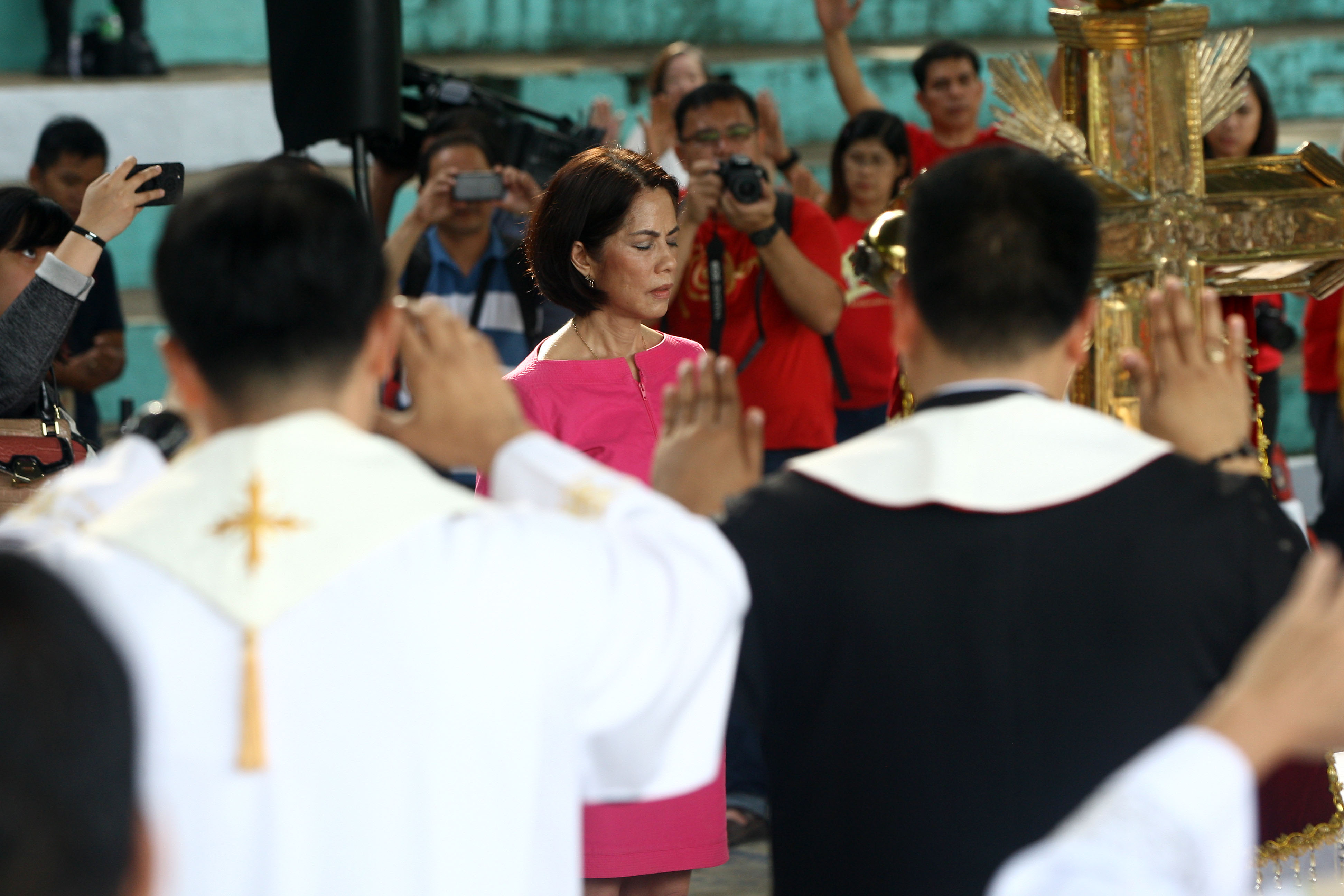
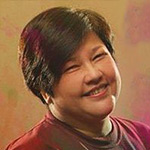



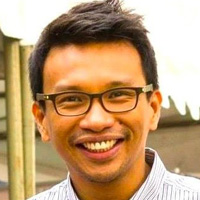
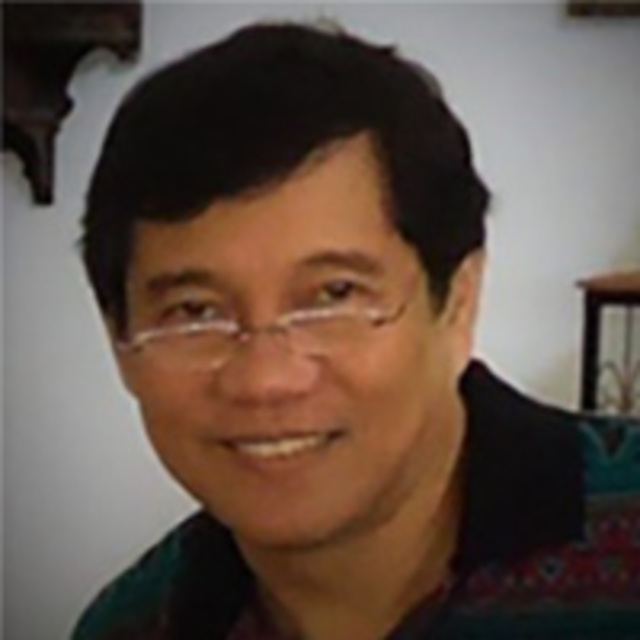



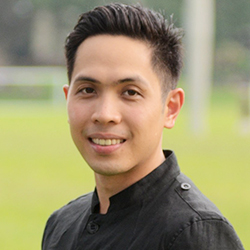



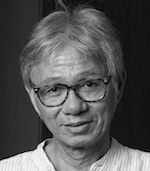



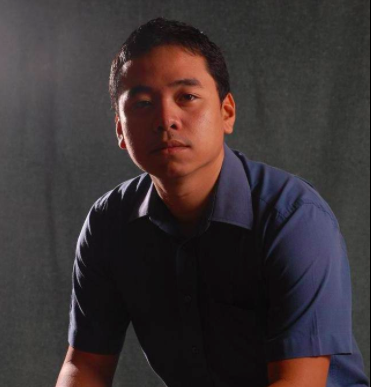

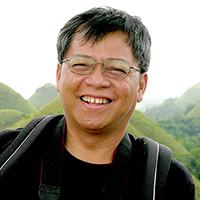 Like many, my immediate reaction to the “joint resolution” issued by the Department of Justice to provide legality to the
Like many, my immediate reaction to the “joint resolution” issued by the Department of Justice to provide legality to the 
